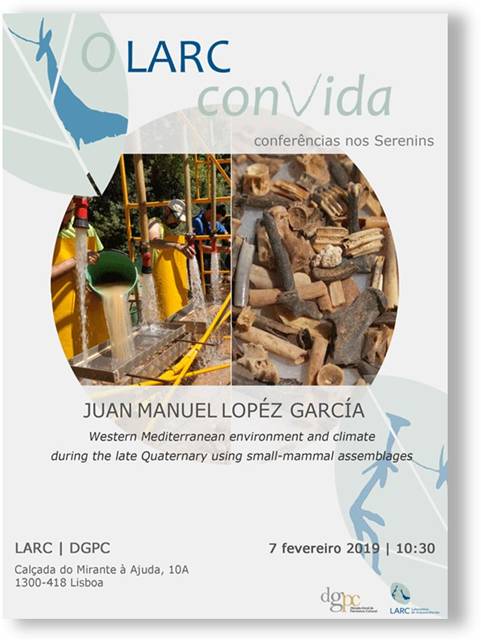Lista archport
Mensagem

[Archport] Para divulgação: O Larc ConVida
|
O próximo O LARC conVida é já nesta quinta-feira, excepcionalmente às 10:30 da manhã. O Juan Manuel, do Institut Català de Paleoecologia Humana i Evolució Social, em Tarragona (Espanha), é biólogo e trabalha com pequenos mamíferos recuperados em contexto arqueológico, excelentes indicadores dos climas e paisagens vividos e experienciados pelos nossos remotos antepassados. Divulguem e apareçam!
|
| Mensagem anterior por data: [Archport] O novo ano na SPAE | Próxima mensagem por data: [Archport] Fwd: Chamada de comunicações: Congresso de História e Património da Alta Estremadura e Terras de Sicó |
| Mensagem anterior por assunto: [Archport] Palmira e os arabescos da História | Próxima mensagem por assunto: [Archport] Para divulgação - Relembro: O Larc ConVida |
